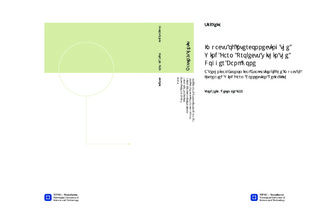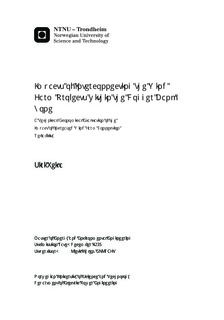| dc.description.abstract | The Dogger Bank zone, which has been awarded to Forewind for development, is planned as the world s largest offshore wind farm with an agreed target of 9 GW installed capacity. Due to the size of the wind farm it will be developed as several individual projects (from here on referred to as projects) with a rated production of 1.2 GW. Each project is planned to be connected to shore via an HVDC link. The aim of this master thesis is to investigate the possible benefits of including interconnections between the projects. Adding interconnections will be beneficial if the revenue from delivering more energy to the UK main grid is larger than the added investment cost over the life time of Dogger Bank. In this thesis three connection schemes have been studied, in which four projects are included. These are:Base Case: Each project has an individual radial HVDC connection to shore. No links interconnect the projects.Case Two: Each project has an individual radial HVDC connection to shore. In addition two and two projects are connected in pairs by an HVDC connection with a rating of half of the rating to shore.Case Three: Each project has an individual radial HVDC connection to shore. In addition all four projects are interconnected by an HVDC ring system with a rating of half of the rating to shore.In addition several analyses have been made on variations of these cases. Among these variations were varying reliability parameters, varying the ratings of cables, operating the system without HVDC circuit breakers and using HVAC technology for the project interconnections.By performing reliability analyses and taking into account the actual production the amount of energy that is delivered to shore has been calculated for each of the three cases. The total costs of the different connection schemes has been studied by taking into account only the components that will have different investment costs and operation- and maintenance costs in the three cases. A simplified economic analysis was used. The analysis uses an imagined expense account and revenue account with the same interest rate, and the profit for each year is found as the difference between the revenue account and the expense account. For the reliability analyses a tool was developed in Microsoft Excel which has the ability to take into account both overlapping faults and variable production for these particular cases. The method behind the Excel program, which is presented in this thesis, can be implemented in other platforms and be used to study alternative layouts and other systems. The results yielded by the analyses show that Case Three is the best option among the three. An Expected Situation is defined, in which the layouts are as described above and the reliability variables and prices are as the expected level. The results in the Expected Situation show a profit increase of some £ 2 billion in Case Three compared to Base Case.When varying the reliability variables it is found as would be expected that increasing the parameters (e.g. repair time and rate of failure) leads to a decrease in unavailability of the system and thereby a decrease in delivered energy and revenue. It is also found that as the availability of the system decreases the benefit of using the Case Two and Case Tree layouts increases. Variations in cable price and interest rate, which are among the main influences in the economic analyses are found to have limited impact on the difference in profit between the three cases. High cable prices are found to, to some extent, reduce the benefit of added interconnections. Added interest rate tends to favour added interconnections.Analyses of the project interconnections show that ratings of approximately 50 % of the project rating will be optimal. Congestion in the connections to shore makes the connections to shore the limiting factor for energy transmission in most situations. Some more energy is delivered when the interconnections are given higher rating, but the increase in revenue from this energy is not enough to cover the extra cost of higher rating. Because HVDC circuit breakers are a brand new and costly technology analyses were performed to evaluate the impact of operating the system without such breakers. The analyses show that leaving out HVDC circuit breakers will have a positive impact on the Dogger Bank economy. Using HVAC instead of HVDC technology for the project interconnections was found to be beneficial because of the high cost of HVDC circuit breakers. Comparing the HVAC case with the HVDC case without HVDC circuit breakers leaves the two alternatives relatively equal in terms of profit and more thorough analyses are needed to decide which of the two offers the best solution. Based on the analyses performed in this thesis it is fair to conclude that interconnection of the projects should not be disregarded in the development of the Dogger Bank zone. | nb_NO |

